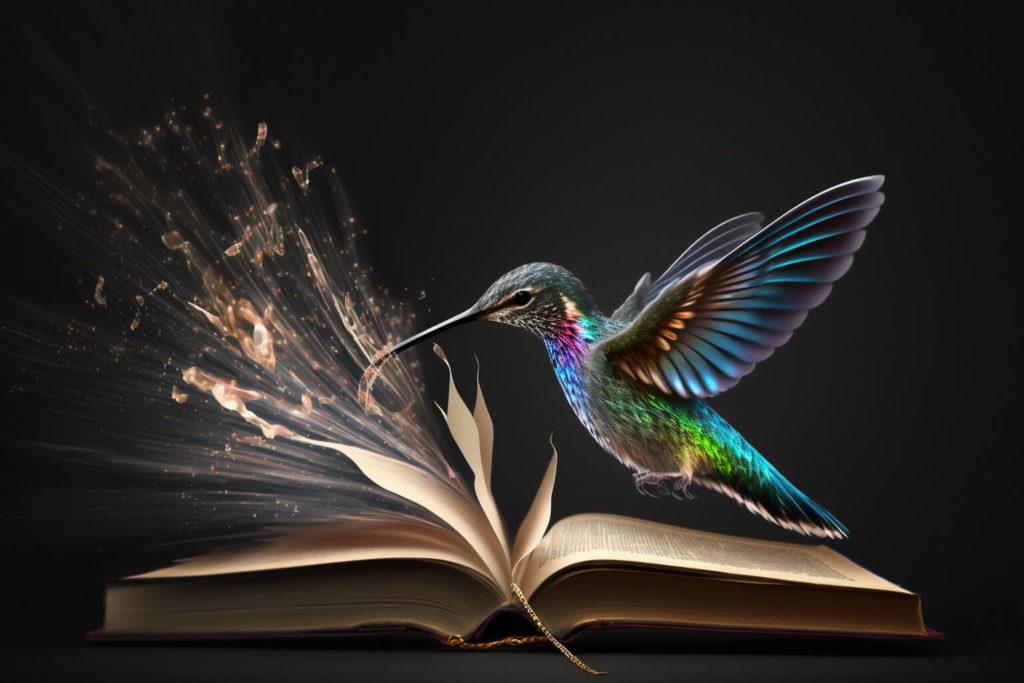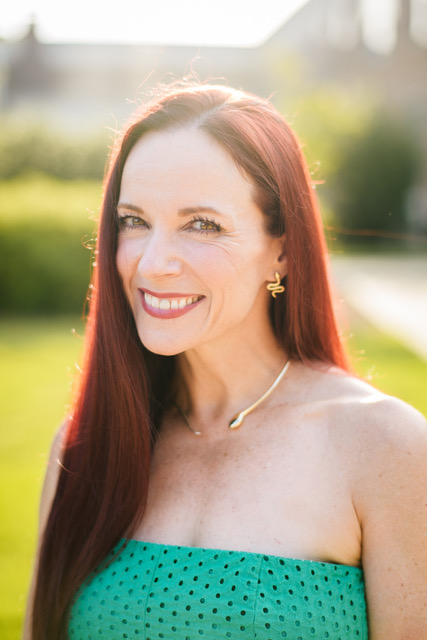Workshops
Through inspirational writing exercises and guidance from Beth Ann Fennelly, learn how to start small to tell your big story in this interactive memoir workshop.
There are no available registration dates at this time.
What should we do when we have the urge to write our stories, but we can’t figure out how or where to start? This series of all-levels, interactive craft classes and workshops will provide strategies for those seeking to answer this question. Our main strategy will be this: start small.
Our spirit animal for this class will be the hummingbird. The hummingbird is the only bird that can fly forward, backward, sideways, and, for short distances, upside down. Precisely because they are so small, hummingbirds can do things other birds can’t do. In this class, we’ll look at tiny texts and study the things that they can do because they are small. How can attention to the tiniest literary creations challenge and inspire us? How can writing small trick us into writing our big stories?

Every day we will focus on a different short form and/or technique. In today’s increasingly heterogeneous landscape, cross-genre works that blend inheritances from multiple literary parents have a new urgency and popularity. These hybrid forms are also unusually user-friendly, especially for writers who feel overwhelmed or intimidated when faced with telling their truths.
Beth Ann Fennelly will begin each day with a craft talk and share favorite examples and tips, then give students a writing prompt and time to compose. Next, when we come back together, you’ll have the opportunity to share your work and receive constructive feedback. And the last part of the workshop day will be time for questions and individual consultations.
The schedule for our five-day class will go like this:
Day 1: Word-hummingbirds
We’ll begin by appreciating the fleetest of forms, such as the monostich, the 6-word memoir, the aphorism, the ten-second essay, quick crit, and the American Sentence. In this first segment of the master class, Beth Ann will intersperse ten things she’s learned from writing tiny texts. Then she’ll turn class attention to her favorite short form, the micro-memoir. Combining the extreme brevity of poetry, the narrative arc of fiction, and the truth-telling of creative nonfiction, the micro-memoir is an exciting hybrid that transforms small, overlooked moments into powerful evocations.
Day 2: The Hermit Crab Essay
The hermit crab essay is an essay that borrows its structure from an ordinary non-literary source, such as a recipe, a crossword puzzle, or a questionnaire, and uses that structure to propel itself forward, much like the vulnerable hermit crab borrows another creature’s shell to make its way across the dangerous ocean floor. As we look at examples by Brenda Miller, Suzanne Farrell Smith, Esme Weijun Wang, Michael Martone, Anuska Jasraj, Lauren Trembath-Neuberger, Carmella Guiol, Patrick Madden, and Jill Talbot, Beth Ann will share some tips and tricks about this hybrid form that’s surprisingly successful at helping writers access difficult material.
Day 3: The Zuihitsu
This classical Japanese hybrid is a capacious form, reminiscent of the lyrical essay but embracing spontaneity and incorporating various textures and tones. A zuihitsu (which translates as “running brush,” indicating that it traces fluidly the movement of the mind) might start with an anecdote, drift into a dense poetic observation, veer into a quirky detailed list, etc. We’ll look at the origin of the form as practiced more than a millennium ago by Sei Shonagon, then read some modern practitioners such as Kimiko Hahn, Tina Chang, and Suzanne Buffam before trying our own.
Day 4: Stranger on a Plane: The First Thirty Seconds
When someone sits down next to us on a plane and begins talking, we immediately evaluate them–are they worth engaging, or is it time to insert the earbuds? In the same manner, when we read the opening paragraph of a memoir, we meet a character that we’re immediately judging as worthy of our time–or not. In this craft class, we’ll look at several different opening paragraphs without outside knowledge of author/title/context in order to study how quickly successful voice is created. Our goal will be to sharpen skills we can apply to our own opening paragraphs.
Day 5: Dissecting the Frog: Strategies for Using Humor
E. B. White said “Analyzing humor is like dissecting a frog. Few people are interested and the frog dies of it.” This all-levels, multi-genre, interactive craft class isn’t designed to turn us into comedy writers, but it will some strategies to infuse humor into our more serious stories, essays, and poems. We’ll study examples from a range of contemporary writers, including Lorrie Moore, Samantha Irby, Meghan Daum, Sloan Crosley, Denise Duhamel, Harrison Scott Key, and David Sedaris. Participants should bring with them a small writing sample as after studying others’ use of humor we’ll attempt to create some of our own.
Instructor, Beth Ann Fennely’s TEDx Talk on how literature can help us develop empathy:
Excerpt: Reading fiction can educate us emotionally, intellectually, and spiritually, says Beth Ann Fennelly, creative writing professor and poet laureate of Mississippi. She makes the case for why we humans — and the world — continue to need literature.
Images by Dave Bell.
Share This

Instructor: Beth Ann Fennelly
Beth Ann Fennelly, Poet Laureate of Mississippi, teaches in the MFA Program at the University of Mississippi, where she was named Outstanding Teacher of the Year. Beth Ann has published three poetry books: Open House, Tender Hooks, and Unmentionables, all with W. W. Norton. She is also the author of 3 books of prose: Great With Child: Letters to a Young Mother, a collection of essays; The Tilted World, a novel co-authored with her husband Tom Franklin; and Heating & Cooling: 52 Micro-Memoirs (2018)—a celebratory book that combines the compression of poetry with the truth-telling of nonfiction. Ranging from childhood recollections to quirky cultural observations, these micro-memoirs build on one another to arrive at a portrait of Beth Ann Fennelly as a wife, mother, writer, and deeply original observer of life’s challenges and joys.

